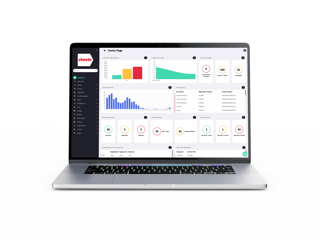Maintenance risks from private cars appear to be rising.
Many household budgets are being squeezed between the rising price of necessities and stagnant wages.
This puts pressure on staff to cut corners on routine maintenance and repairs when money is tight.
More than one in six private motorists in the UK claim on motor insurance every year, with claims totalling £8 billion annually. But when grey fleet drivers find a cheap online deal on insurance, it may be a risky bargain.
Six out of 10 drivers went to price comparison websites for motoring insurance in 2010 but few probably realised that the best deals typically provide little or no cover for business use.
There is a significant likelihood of a grey fleet driver being uninsured when driving on business.
Environment
Grey fleet cars, which are typically seven years old, emitted an average of 171g/km of CO2 in 2010, whereas the average new car leased to customers by Alphabet emitted less than 140g/km.
In other words, the average grey fleet car was 22% more polluting and used 22% more fuel. Over 15,000 miles that would add up to nearly three-quarters of a tonne more CO2 from the privately-owned car.
Moreover, its owner would pay £380 more for fuel (at February 2011 prices) than the average driver of an Alphabet company car.
Quite apart from the undesirable impact of older cars on the environment, their high fuel consumption can encourage drivers to over-claim mileage expenses.
Employers commonly peg their fuel-only reimbursement rates for car allowance drivers to the HMRC rates, but at the time of going to press the fuel element of the 40p per mile Approved Mileage Allowance Rate (AMAP) rate for a 2-litre diesel was 11.5p whereas the actual cost for a typical grey fleet car was about 14p per mile.
An employee in that position could swallow the loss, or could ‘massage’ their expense claims to make up the difference, or they could ask for a higher pence per mile rate based on evidence of their car’s actual consumption.
The last two possibilities represent additional costs and potential legal or tax issues that the employer would doubtless prefer to avoid.
Cost
As the two preceding sections show, grey fleet cars cost employers more than just the mileage expenses claimed by drivers for work.
Excluding excessive mileage claims, the financial impacts from a poorly-managed grey fleet include demands for additional remuneration, added administration, (for example, some employers add grey fleet vehicles to their insurance policy on a journey-by-journey basis), additional control measures to ensure compliance with HMRC rules, and driver downtime due to accidents or breakdowns.
Are there any simple ways a fleet manager can get to grips with this area, without bringing in outside help?
RoSPA offers a number of free guides for drivers and employers, which can be downloaded from the Resources section of their website (www.rospa.com). You can also contact Alphabet to request a very useful free Grey Fleet Toolkit.
It contains six easily-adapted templates designed to get any fleet up-and-running with a basic grey fleet management process.
The toolkit comprises:
1. Business driving survey
2. Generic company car policy
3. Owner-driver declaration
4. Cash allowance driver declaration
5. Company car driver declaration
6. Business Driving Permit
A self-contained training workshop is also available from Alphabet which has been designed to bring safe driving to the fore. The workshop consists of a handful of short animations with exercises designed around each film.
The pack has everything you need to run the workshops in-house, including a training manual, a CD-Rom containing the animations and a PDF of a delegate handout.
While they are not intended to be a complete solution for managing grey fleet risks, these documents are a handy starting point.
Every fleet manager should read the official Health & Safety Executive guideline, Driving at work – Managing work-related road safety, which is available as a free download at www.hse.gov.uk.
Even if you don’t plan to bring in outside help to begin with, getting support from colleagues and buy-in from senior managers will make all the difference.
Enlist support from HR, finance and health and safety to help you evaluate grey fleet activity and suggest solutions. You may need to survey everyone in the organisation to find out who drives their own cars on business.
For this reason you might want to ask for board-level sponsorship for your initiative.
This should help you to get colleagues to cooperate and ensure that your efforts ultimately receive the recognition they deserve.





















Login to comment
Comments
No comments have been made yet.